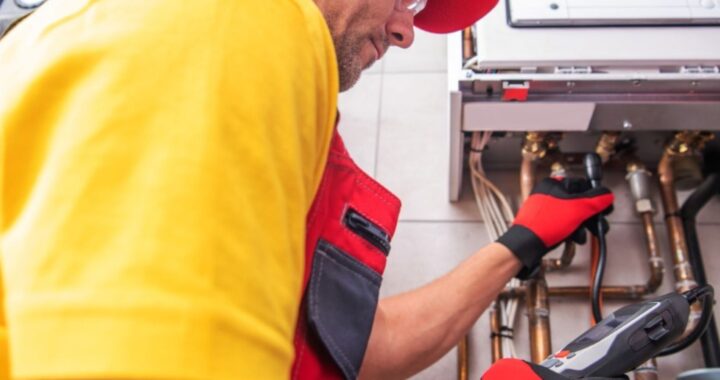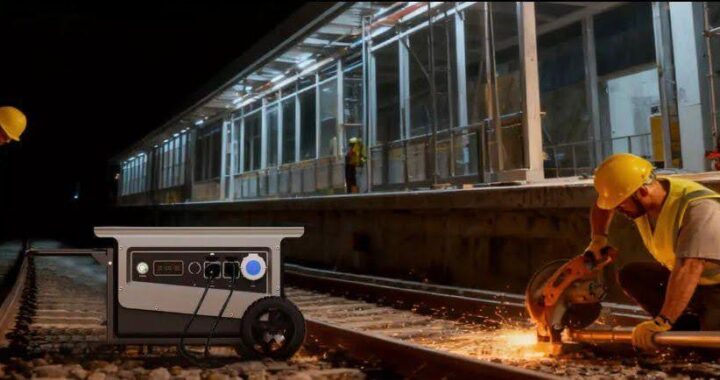How Smart Data Tracking Solutions Are Transforming Industrial Operations

Managing assets and monitoring essential data are core concerns across modern industrial environments. Increasing demands on reliability and output have given rise to sophisticated data tracking systems. These tracking solutions provide continuous updates, allowing organizations to oversee equipment usage and environmental variables without delay.
With wireless hardware carrying several sensors, information about asset conditions is sent directly to command dashboards. Any sign of malfunction or irregularity can be addressed rapidly, supporting both performance and responsible resource usage. This real-time approach forms a foundation for more precise maintenance practices, safer worksites, and optimized equipment lifecycles.
Designed to suit the requirements of challenging industries, today’s smart data tracking systems help streamline day-to-day activities. Their analytical tools contribute to improved efficiency, safer environments, and assurance in meeting regulatory requirements.
Comprehensive Smart Data Tracking Solutions
Data tracking systems continuously gather, transmit, and process operational and environmental inputs from a variety of assets. They take advantage of durable wireless hardware and purpose-driven sensors to support basic oversight as well as complex analysis.
The collected data is transmitted securely to analytics platforms, making the status of equipment clear at a glance. Operators can receive updates on performance, plan interventions, or make inventory decisions with increased confidence. These processes help organizations reduce risks and run smoother, more organized facilities.
Core Features Of Rugged Wireless Devices
Industrial operations require devices able to withstand difficult surroundings. Wireless trackers are often built to endure common challenges such as moisture, dust, vibration, and extreme temperatures. Their main attributes include:
- Hardwearing construction to handle impacts, dust, and water exposure.
- Batteries intended for the long term, minimizing the need for frequent replacement.
- Wireless connections across various network types, like LTE and LoRaWAN, provide coverage for both stationary and mobile assets.
 Security is maintained through regular firmware upgrades and encrypting sensitive transmissions. This limits unauthorized access to information, whether devices are stationary on-site or moving between locations. Constant reliability is at the forefront of design, ensuring performance under the pressure of industrial work.
Security is maintained through regular firmware upgrades and encrypting sensitive transmissions. This limits unauthorized access to information, whether devices are stationary on-site or moving between locations. Constant reliability is at the forefront of design, ensuring performance under the pressure of industrial work.
How Multiple Sensors Monitor And Report Data
Wireless trackers carry sensors designed to evaluate several variables simultaneously. Examples include:
- GPS tracking to present accurate positioning.
- Sensors for temperature and humidity to capture changing climates.
- Devices that detect tilt or impact, identifying when assets have been jostled or dropped.
- Light detectors to note tampering or accidental light exposure.
All sensor readings are collected and sent to a software dashboard. Here, permitted users can see live notifications and historical data, letting them judge the asset’s current status and plan upkeep. Improved access to this information helps address small problems before escalating into major failures.
Real Time Asset Tracking And Management
Consistent monitoring delivers updates on asset movement and usage patterns. Management platforms show locations, highlight performance trends, and notify users in the event of unauthorized movement or dangerous conditions.
A system such as the one described on Trustedglobal.com simplifies tracking, enhancing inventory management and reducing the likelihood of lost or misplaced equipment. Automated inventory tallies help prevent asset shortages, while built-in scheduling features support timely maintenance.
Enhancing Operational Efficiency
Reliable tracking platforms drive improvements by making asset locations and conditions readily accessible. Using resilient wireless technology, industrial sites can adopt proactive procedures that conserve time, money, and operational energy.
Preventing Theft With Advanced Monitoring
Protecting valuable equipment is vital for productive industrial operations. Wireless devices report asset locations and supply updates as items change position.
Instant alerts allow operators to respond if items exit safe areas or exhibit irregular movement. Dashboards catalog recent activity, making it easier to pinpoint losses. Historical data analysis reveals vulnerabilities, strengthening protocols and reducing loss through theft or neglect.
Supporting Data Driven Maintenance Decisions
Efficient machinery upkeep depends on accurate information, rather than guesswork. Sensor-equipped units log hours of operation, detect fluctuations in temperature or vibration, and create a log for each asset’s health history.
Data collected from these systems produces actionable reports, guiding scheduled maintenance. Service is performed when genuinely required, reducing avoidable downtime as well as unnecessary costs. This prioritizes technical resources and extends asset usability, avoiding unexpected interruptions.
Promoting Sustainability Through Smart Solutions
Modern tracking systems contribute to environmentally conscious practices by pointing out inefficiencies and reducing both waste and idle resources.
When asset operation can be measured and reported, sites have insight to minimize energy use and excess supply loss. Automatic reports demonstrate environmental impact, aligning daily management with broader sustainability targets.
Thorough asset management enables strategic planning through full awareness of the equipment lifecycle. Continuous monitoring helps track progress toward environmental objectives, maintaining transparency while reducing operational strain.


 Opulent Places Around the World that Homeowners Can Draw Inspiration From
Opulent Places Around the World that Homeowners Can Draw Inspiration From  How Often Should You Book a Tankless Water Heater Service in Georgetown?
How Often Should You Book a Tankless Water Heater Service in Georgetown?  How Can Industrial Power Station Choose Compliant and Economical Emission Reduction Paths?
How Can Industrial Power Station Choose Compliant and Economical Emission Reduction Paths?